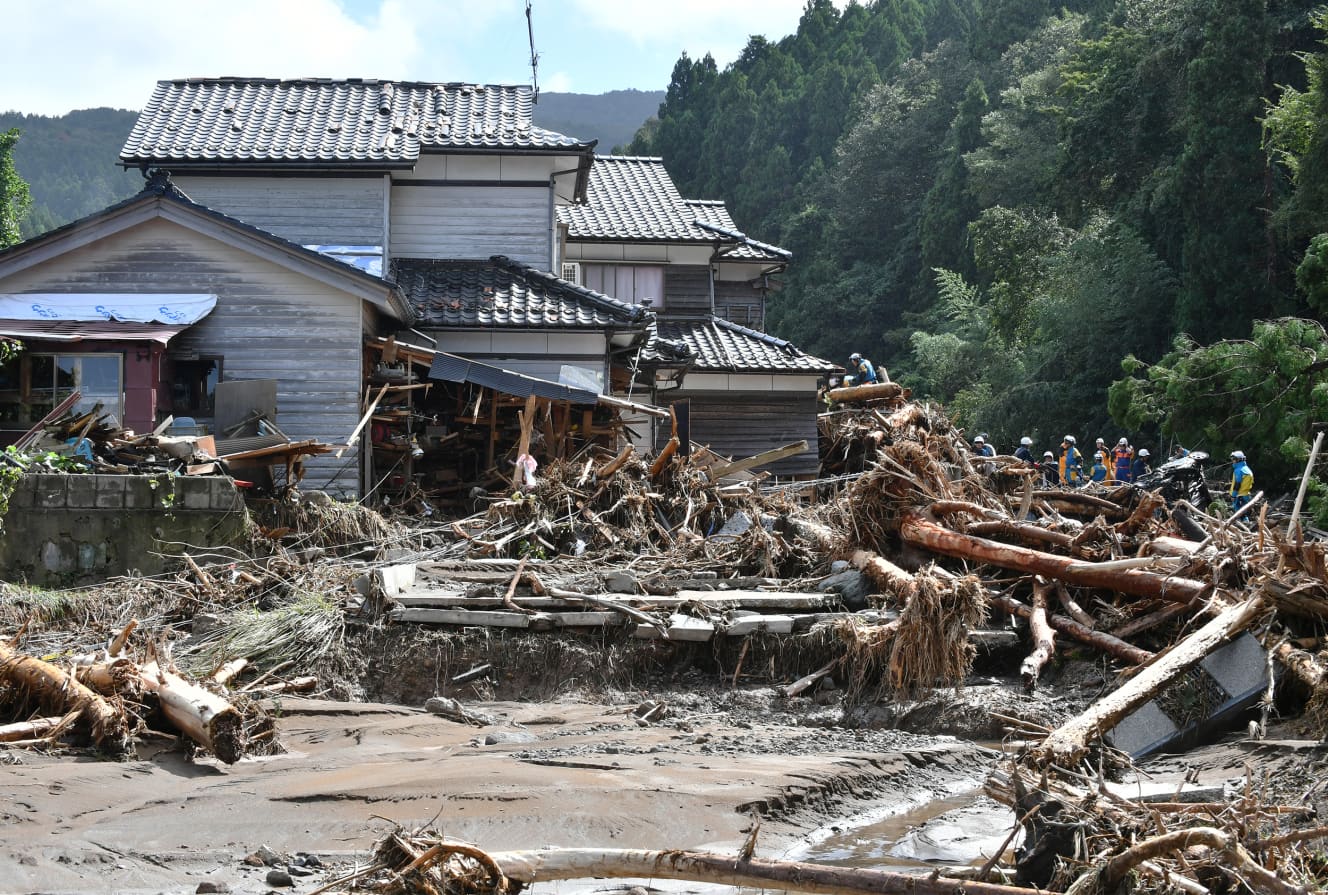Experts Warn of “Murderous Downpour” on Tokyo and Noto Peninsula, Predicting Possible Paralysis of Capital Functions
It could happen anywhere in the Japanese archipelago. One of the heaviest rains ever recorded hit the disaster area, and the city was destroyed by simultaneous landslides and flooding.

The “killer downpour” struck in the middle of recovery efforts.
“This area is low-lying, so the floors were built about 50 to 60 cm high to prevent flooding. Even so, water started coming in, and soon it was up to our waists, so we hurriedly evacuated outside. Even when the water recedes from the room, the mud will remain, so we won’t be able to live here for a while. I’m not sure what we should do about her.” (A man in his 30s who was displaced and is now living in temporary housing near Wajima City Hospital)
The record-breaking heavy rain that began falling around 6 PM on September 20 caused extensive damage in the northern part of the Noto Peninsula in Ishikawa Prefecture. As of September 23, the total rainfall reached 500 mm in Wajima City and 400 mm in Suzu City, both of which set records for the highest amounts ever observed. So far, seven people have died, and the number of evacuees has exceeded 600 (as of September 23).
On the 22nd, a FRIDAY reporter visited Wajima City. There were landslides occurring everywhere in the city, and a strong smell of earth lingered in the air. The normally calm river had overflowed, and many houses and cars were swept away by the raging waters. Homes, shops, and infrastructure that were still in the process of recovery from the massive earthquake in January were severely damaged.
A woman who had a family connection with 14-year-old Kiso Hanon, a third-year middle school student whose whereabouts are still unknown, spoke about her.
“My son was dating Hanon until the earthquake in January. We have even gone out to eat together. She was such a good girl; I can’t believe this has happened. I just hope she is alive.”
“You cannot be too careful wherever you are.”
According to the Japan Meteorological Agency, Wajima City and Suzu City recorded rainfall amounts that reached twice the average for the entire month of September within just 48 hours of the rain starting. How did this “murderous heavy rain” strike the disaster-stricken area?
Professor Yoshihiro Tachibana from Mie University, an expert on climate change, explains the mechanism behind it.
“This heavy rain occurred because warm, moist air flowed in from the south to the autumn rain front that descended from the northern Sea of Japan. The rising sea temperatures due to global warming led to a massive amount of water vapor being drawn into the autumn rain front, resulting in the formation of enormous cumulonimbus clouds, which intensified the damage.”
Research from the Meteorological Research Institute shows that for every 1°C increase in sea surface temperature, hourly precipitation can increase by 7 to 19%. Meteorologist Masamitsu Morita states, “We must remain vigilant against further heavy rainfall.”
“Due to the recent abnormal heat waves, the sea surface temperatures near Japan will likely remain higher than usual for a while. As long as the effects of the autumn rain front persist into October, it is not surprising that heavy rain of around 500 mm could occur at any time.”
Professor Tachibana also sounds an alarm.
“This time, it just happened to be Noto, but if the front or pressure patterns change, the disaster area will change as well. Areas that previously had no image of heavy rain can be affected, so we must not let our guard down anywhere in Japan. If 500 mm of rain were to fall in Tokyo, it would undoubtedly lead to river flooding and inundation, and there would likely be large-scale damage that could paralyze the capital’s functions for several days.”
The unprecedented heavy rain and the prospect of “Japan sinking in October” are beginning to feel alarmingly real.



From the October 11, 2024 issue of FRIDAY
PHOTO.: Junpei Kota (1st) Masahiro Kawayanagi